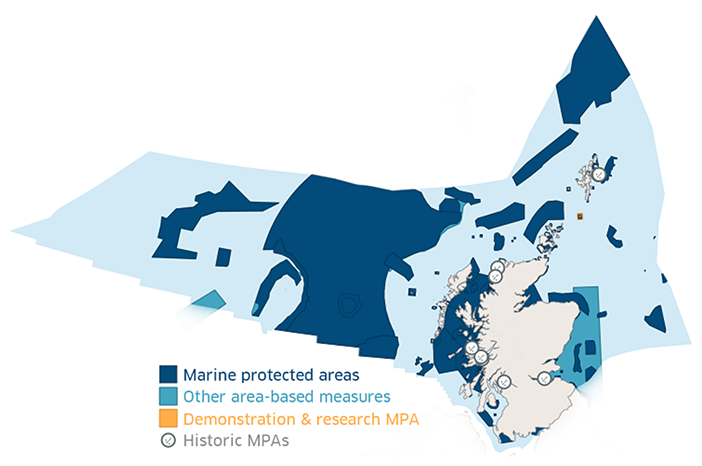Fisheries management measures within Scottish Offshore Marine Protected Areas (MPAs): consultation
Explains what the consultation aims to achieve, how it was developed, and what it will cover. It also outlines the consultation process and how to respond to it.
2. Background Information
Scotland’s seas are some of the most biologically diverse in Europe, supporting thousands of species across a wide variety of habitats. As a nation, Scotland is facing twin biodiversity and climate crises and must act now in order to support the recovery and resilience of our marine environment, and the industries that rely on it.
The marine environment provides a range of natural benefits to society which support the economy as well as our well-being. Some benefits from nature are direct by providing natural products such as fish to eat or wildlife to watch. Other benefits from healthy marine ecosystem processes are less obvious, such as nutrient cycling or the capture and storage of carbon in seabed sediments, or helping sustain well-being through our physical and mental health (‘the natural health service’). These services lead to substantial economic benefits to society.
Scotland’s MPA network helps protect our most important natural and cultural heritage features. Scottish Ministers have national and international commitments to support a network of MPAs which contributes to conservation or improvement of the marine environment.
We manage the network under the principles of sustainable use and by doing so we protect the natural goods and services that they provide for current and future generations to enjoy. By protecting our natural capital, we protect and support the services provided by healthy, productive and biodiverse marine ecosystems, building resilience into marine industries and strengthening food security.
The Scottish MPA network currently consists of 247 sites, as shown in Figure 1, and is made up of sites put in place for various purposes under different legislation. Of these sites 233 are designated for nature conservation, amounting to 37% of our seas. This exceeds the global biodiversity area target of 30% MPA coverage of global seas by 2030.

Contact
Email: marine_biodiversity@gov.scot
There is a problem
Thanks for your feedback